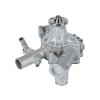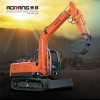
Everyone loves a bull market. When commodity prices reached their peak in 2011 and 2012, these raw material assets were all the rage. The advent of ETF and ETN products that made investing in commodity markets readily available to all investors brought new market participants to the world of commodities. Prior to the introduction of these vehicles, anyone wishing to invest directly in commodities had limited options.
The futures markets offered one path for investment however; the leverage and volatility of these markets is simply too much risk for the average investor. ETFs and ETNs trade on equity markets. An investor can buy and sell these products as they would shares of stock. They were a brilliant invention and they increased the addressable market and liquidity in many commodities.
Those who administer these vehicles go back to the futures, forward, swap and physical markets to hedge as the mission is to replicate the price action in the underlying commodity that it represents. During the bull market the assets or market capitalization of many of these ETF and ETN products swelled along with trading volume as more investors included a commodity or raw material component to their investment portfolio.
However, as the bull has turned into a bear, many of these products have seen volumes dwindle and market caps shrink. A bear market is simply not as popular as one that is going higher. Even though there are inverse products, specifically geared towards a bearish view, these products are not as popular as the bullish products.
I believe that this is a function of human nature. For the vast majority of investors and traders it is more comfortable to buy than to sell as an initial trade. A great example of this is two leveraged natural gas ETN products, UGAZ and DGAZ. UGAZ is a triple bullish product while DGAZ is triple bearish.
In 2015, the price of natural gas has done little but move lower. The price of active month NYMEX natural gas futures began the year at around $3 and peaked at around $3.35 per million Btu's in January. In late October, the price dropped to lows of just under $1.95 and as of December 4 the price was under $2.20. The bullish ETN product, UGAZ had a market cap of just over $340 million on that date while DGAZ, the bearish product, had total assets of around $57.5 million. Clearly, for investors using these products, it is more popular to be bullish than bearish, even in a bear market. Another example of this is the vehicles available for trading crude oil on stock exchanges. UCO is a double leveraged bullish vehicle with a market cap of just over $870 million as of December 4, 2015. This energy commodity has also been in a brutal bear market in 2015. The SCO is a double leveraged bearish vehicle in crude oil and as of the same date, it had total asset of only $123 million.
In 2015, the vast majority of commodity prices moved lower for a number of reasons. The strength of the U.S. dollar was a bearish factor. Slower economic growth in China, the world's largest commodity consumer by virtue of population and growth, caused demand for raw materials to decline. European economic lethargy caused a decrease in demand for commodities. Finally, investor interest in this sector, which attracted so much excitement and money during the bull market until 2011, shrunk dramatically. 2015 has been a rough year for commodities. A composite of six sectors including over 30 different raw material markets dropped by over 13% as of the end of the first nine months of the year and it has continued to move lower in the final quarter of the year.
Investor interest in commodities has dried up as the bear market has taken prices lower over recent years. However, these products are not going away and commodity markets are highly cyclical. During the next bull run, interest will return and market caps of bullish ETF and ETN products will once again swell. This will translate into more liquidity and volume in the commodity markets themselves. Administrators of these products will once again increase activity to replicate the actions of raw material assets for investors looking to capitalize on higher prices. For most, it is far more comfortable to ride a bull than a bear.






